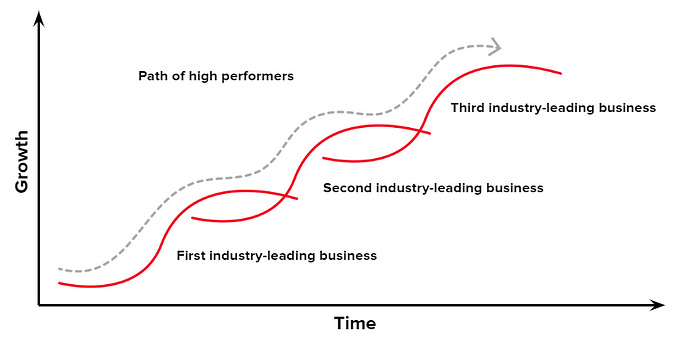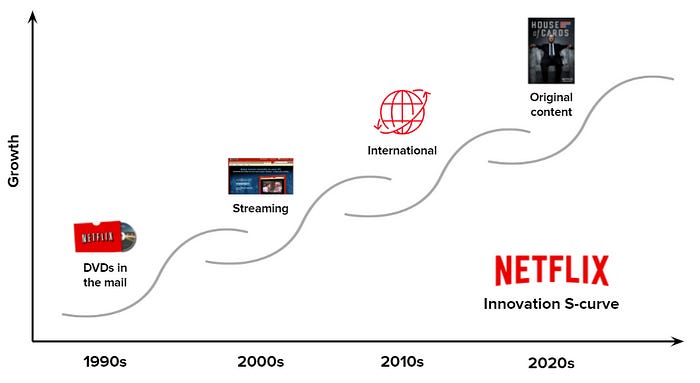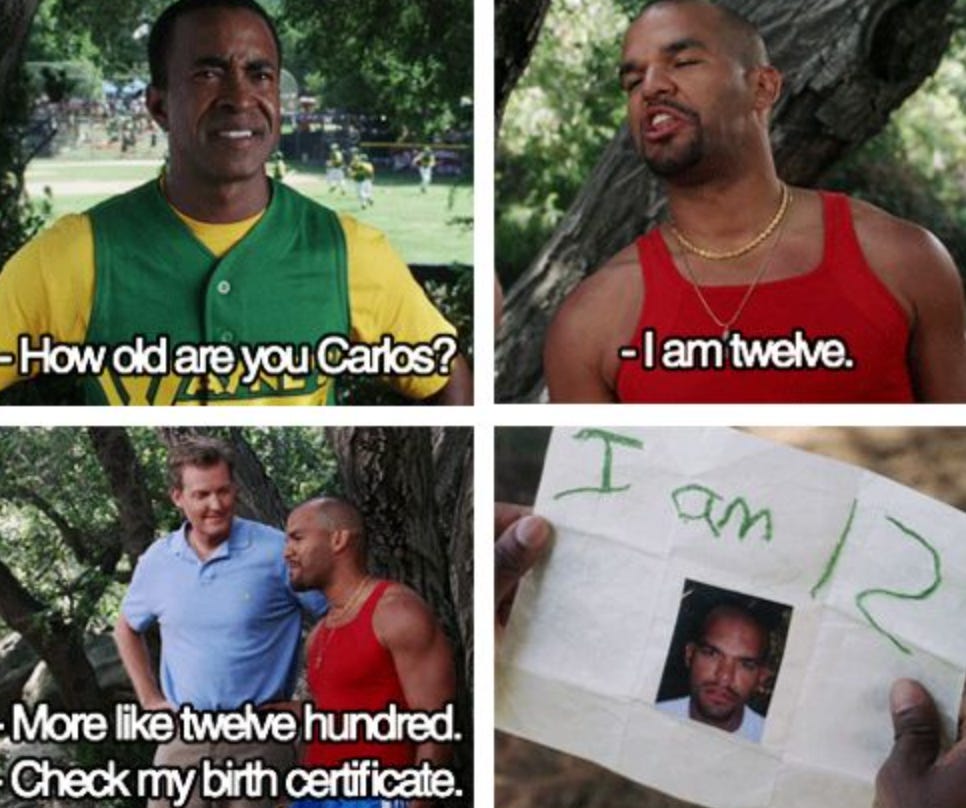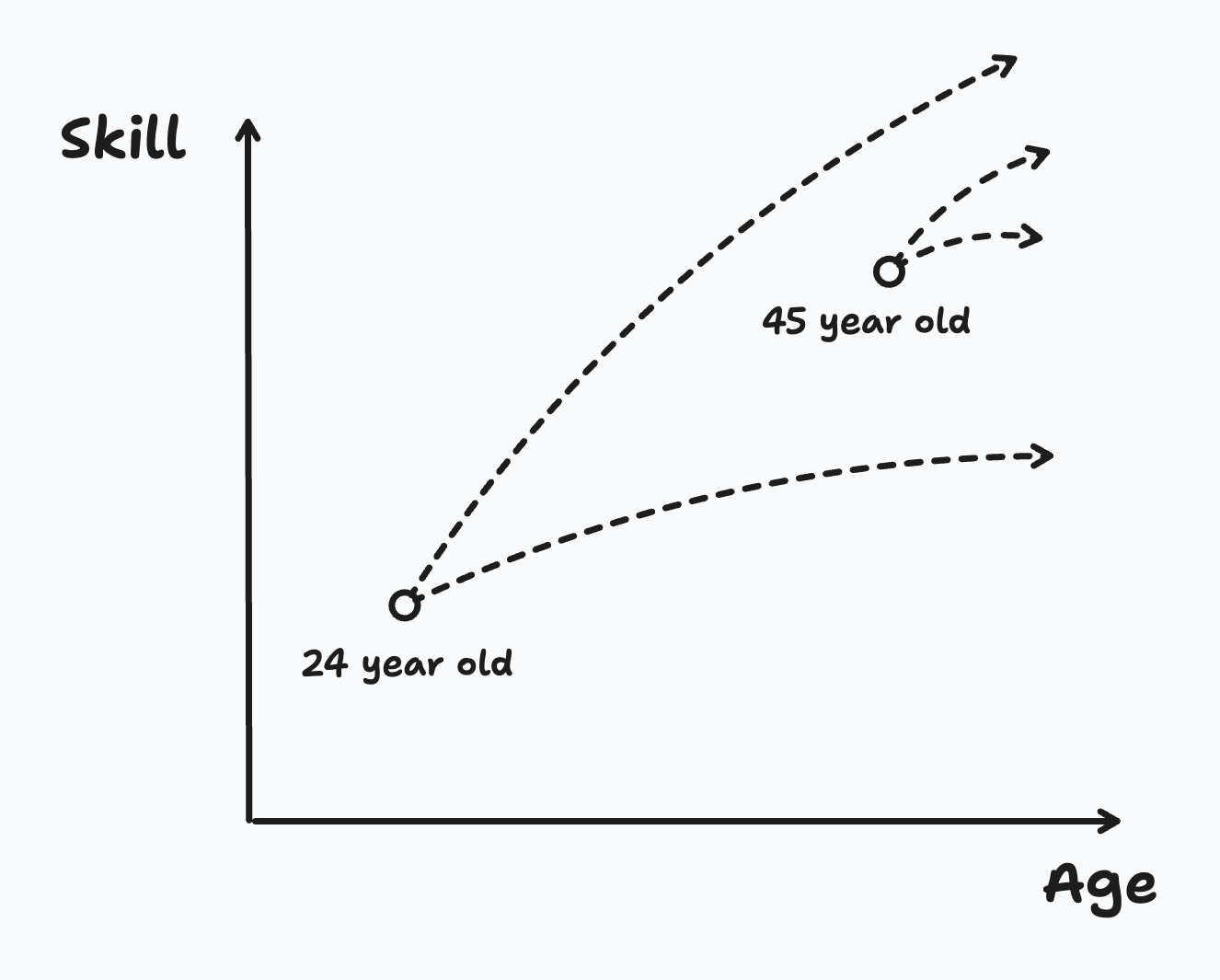In the baseball scouting community, there’s a common word called “projectability.”
Consider Japanese phenom Roki Sasaki who recently signed with the Los Angeles Dodgers1. One scout said2:
“He’s as good as advertised,” one international scouting director said. “He has an ideal projectable, lean and athletic frame. He has excellent arm action and delivery, with three plus power pitches with control over command. He has No. 1 upside.”
So, what exactly does projectability mean?
I grew up playing baseball and didn’t appreciate this concept until later. This post distills what I’ve learned about projectability and explains why it matters beyond baseball.
Understanding projectability
Projectability describes someone’s hypothetical future abilities. The term is defined by Keep Playing Baseball, a baseball recruiting non-profit, as:
…forecasting a player’s room for growth in an effort to predict future ability. A simple way to think about projectability is to ask how much better we think a player can become in the future. Projection usually takes an optimistic view of what a player can become if everything goes well with their development, maturity, and training.
To make the concept concrete, let’s say you have two 15-year-old baseball players, Player A and Player B, with identical stats.
Player profiles
Player A: A baby-faced, skinny kid. Never hit the gym a day in his life.
Player B: A 210lb athlete who reps 225lbs on the bench press with ease. Has been able to grow a beard since he was 12.If you’re a scout, Player A excites you more every time.
This is perhaps counterintuitive but, scouts don’t care if you’re a “man among boys” like Carlos from The Benchwarmers.
While Player A and Player B are equally skilled today, Player A has a higher ceiling. Even if Player B improves faster than Player A in the next year, scouts are playing the long game.
They’re in the business of finding talent whose value isn’t obvious. This is why scouts focus on projectability in player evaluations.
Projectability beyond baseball
Projectability extends beyond baseball.
Two areas where it comes up all the time are hiring and investing. But projectability applies to nearly every area of life.
Buying a new home? You might consider the trajectory of the city or the neighborhood. Dating in your 20s? You’re probably thinking through how the people you meet will evolve as they age.
The common thread is that there’s some known information but a lot that’s unknown. Projectability is the delta between the known and the maximum potential, much of which is unknown.
Projectability is a young person’s game
One of the laws of projectability is that nothing is projectable forever.
Over time, enough data accumulates for the world to understand a person’s potential.
Jack Raines covers this in his most recent post “The Late-20-Something's Professional Dilemma”
…when you’re in your 20s, people evaluate you on your potential. Going to the right school, landing the right starter job(s), having some novel life experiences, and working on a cool side project or two all enhance that potential. No one faults the ambitious-but-uncertain 24-year-old for not knowing what they want to do with their life, as long as they have potential…But as you approach 30, people quit caring about your potential (or, at least, it certainly feels that way), and they want to see what you’ve done with it. “Potential” is a call option with an expiration date: if you don’t cash it in, it expires worthless.
This comparison to a call option is a good one and aligns with how scouts view athletes. After some period of time, the player is no longer a “prospect” and you need to start evaluating them based on their performance today.
In his recent Art of Hiring talk, Keith Rabois makes a similar comment, interestingly with the age of 30 also being the cut-off.
The most important lesson I ever learned from Peter Thiel when I joined PayPal was…you can't hire anybody over 30. He might not say that in exactly the same way today but basically what he was trying to say by that is by the time you’re 30 everybody on the planet knows how to assess you pretty accurately because there's enough data points on your resume back then or LinkedIn profile today that you can come to a consensus view about your abilities.
The age of thirty is somewhat arbitrary, but the point is that the older you get the more people will rely on past performance when evaluating you. For young people, there’s more variance in their future performance and often that upside is often mispriced.
Not every young person will become a high-performing executive, but some have that potential. These are the “projectable” talents.
In hiring, like scouting, the skill comes from discerning future stars from the rest.
Taking advantage of projectability
People are always assessing your projectability. If you’re young, it will happen all the time. If you’re starting something new, people will be trying to gauge the potential of what you’re building.
How can you use this knowledge to your advantage and boost your projectability?
Tell better stories
Projectability is about the narratives we create for ourselves.
When baseball scouts see a skinny 15-year-old pitcher, they imagine how if that kid grows a few inches, gains a few pounds of muscle, and continues to practice, they can be in the big leagues.
Instead of leaving the narrative to the viewer, we can become more projectable by telling more compelling stories ourselves.
The best early-stage CEOs are good storytellers. They make their business projectable and let investors see beyond today’s company to the multi-billion dollar company of the future.
Stay in motion
Projectability requires growth. Once you reach an asymptote, you’re no longer projectable.
The more you push yourself to grow, the more others will believe in your potential. Even small, incremental growth over time creates a mental trend line that can be projected into the future.
Stay in motion to stay projectable.
Take more bets
Everything eventually plateaus. Whether it’s a skill or a product, there’s an initial period of rapid growth followed by a leveling off.
The best companies and people hack this by stacking S-curves.

Take Netflix. Their business has had many distinct chapters that accelerated growth as the core business plateaued.

The business wouldn’t be the success it is today without these new bets.
It’s easiest to visualize the power of new bets in terms of companies and products, but it also applies to skill development. The more you invest in new skills and stack them together, the more you make yourself projectable to the world.
Naval Ravikant says:
There are probably multiple things you’re natural at because personalities and humans are very complex. Take the things that you are natural at and combine them so that you automatically, just through sheer interest and enjoyment, end up top 25% or top 10% or top 5% at a number of things.
These new skills make you less static and increase your real (and perceived) potential.
TLDR
We’re all evaluated on our potential, not just our abilities today — this is measured as “projectability”
When hiring or investing, the alpha lies in identifying projectable people or assets
Tell better stories, push yourself to grow, and take more bets — these will raise your ceiling and make you more projectable.
As a San Francisco Giants fan, it absolutely pains me to use this example.
https://www.mlb.com/news/roki-sasaki-scouting-report




